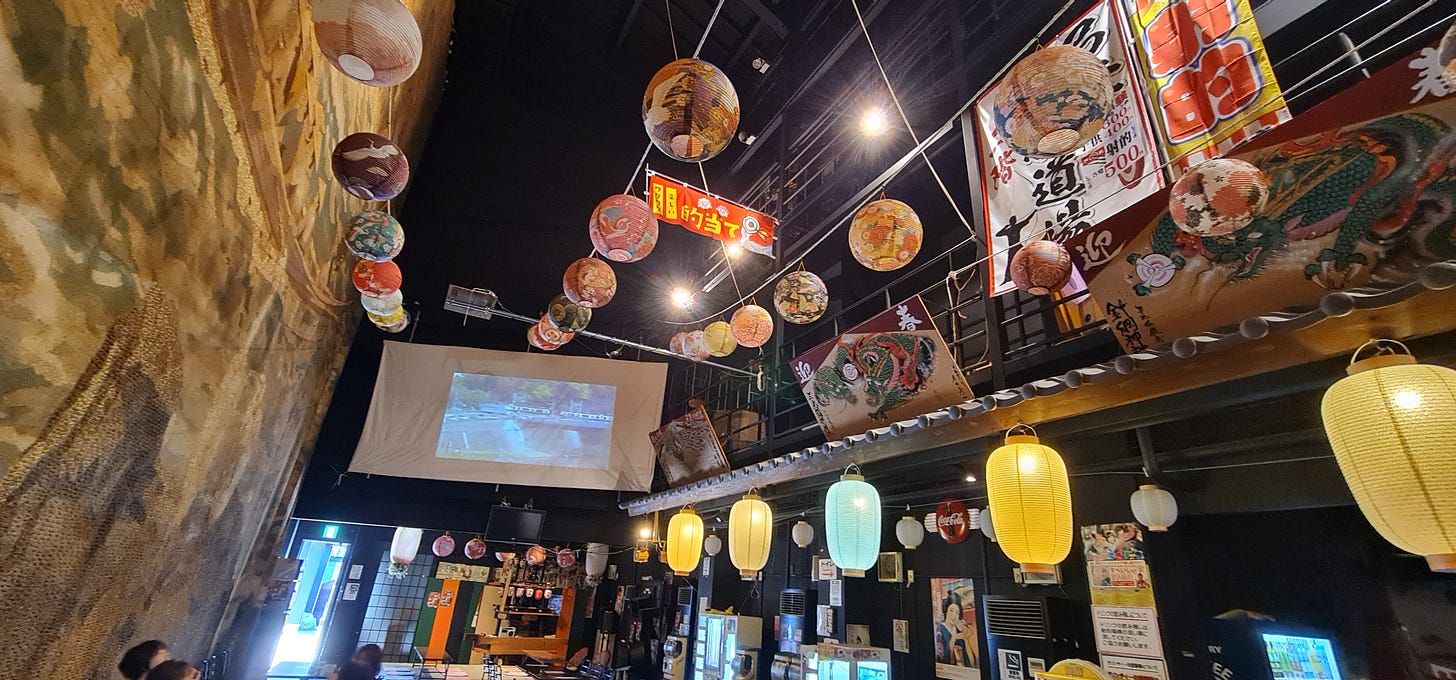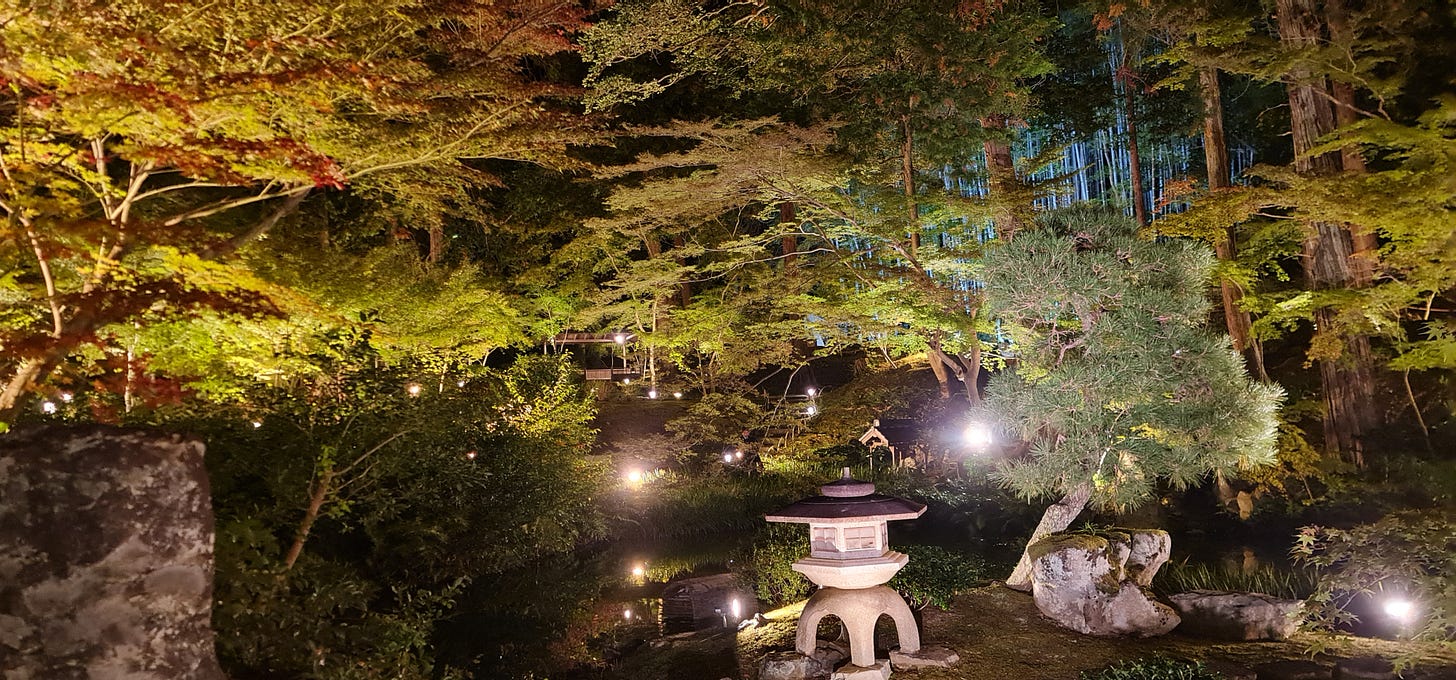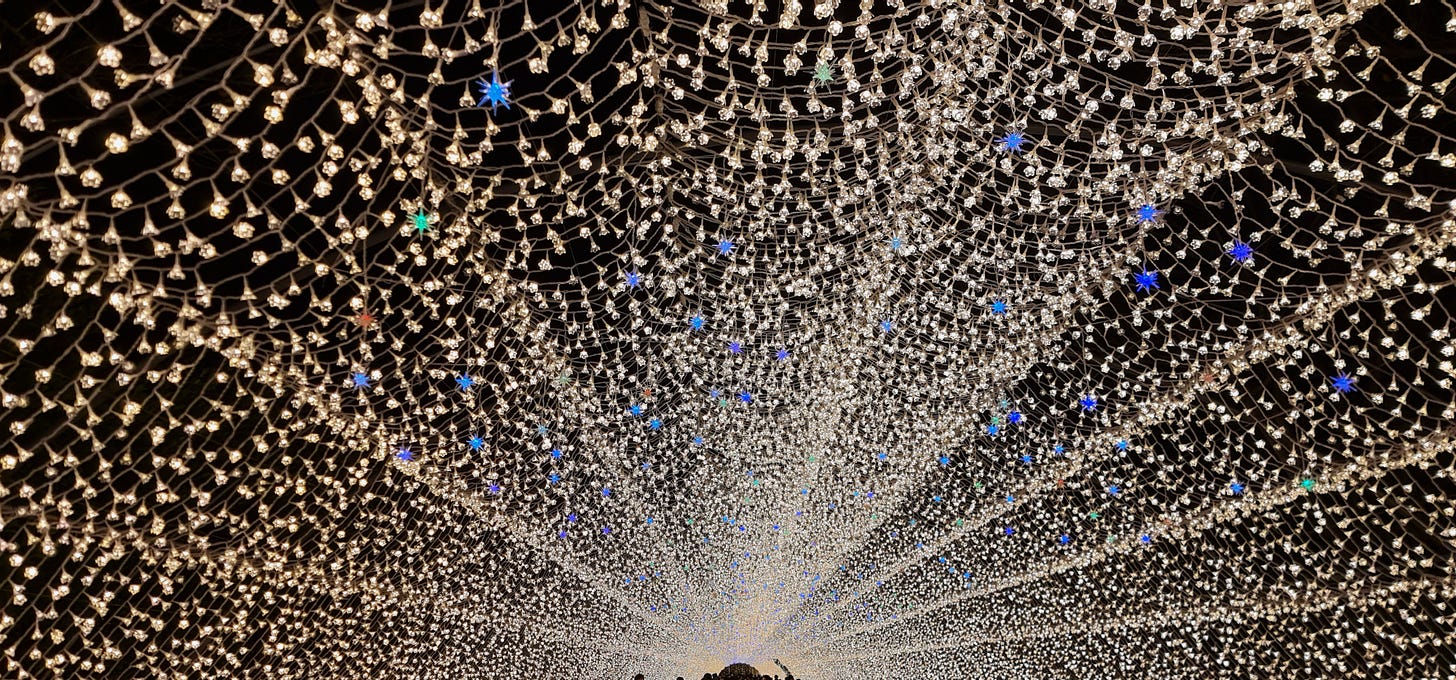Winter in Japan marks the start of many people’s favourite activity. This activity does not require skis, or even snow. In fact, it doesn’t even require winter. I am talking of electrical light. Yes, winter season of Japan is the land of illumination.
Japanese illumination in a nutshell is the elevation of Edison’s (or whoever your favourite 1800s nerd) famous lightbulb. Keep reading to understand how electrical light has become an obsession of Japanese city life, and where to look for this modern wonder.
I See the Light
The history of light started a mere 380,000 years… after the Big Bang. From there, life as we know it mostly relied on the light from the sky until the invention of fire about 400,000 years ago. At some point, this led to the realisation that you could use fire to see when the sun was down.
Various countries tried different ways of keeping light cheap and bright at night. As we skip forward past thousands of major and minor inventions to make stable light, we come to Japanese lanterns. As with all things Japan, there are lots of styles that get categorised under the lantern umbrella.
First, the iconic paper lantern. Chochin. When the official first chochin is not properly known as they aren’t exactly made from the longest lasting material. Most experts say they’ve existed since the Muromachi Period in the 1300s. Once they’ve been adjusted and improved upon, the more modern versions became widely adopted. The last major iteration of the Chochin draws from the Edo Period and features a candle or light surrounded by a collapsible paper casing with Kanji written on it.
As a symbol of traditional Japan, this adorns the sites of many of Japan’s famous temples. You may think that Chochin is the OG illumination, but it’s not even the original temple lantern. They’ve just endured beyond older lanterns since people like the pretty lights and mostly harmless like Kylie Minogue.
The real long timers are the stone lanterns or Ishi Dori. These can be massive structures that have existed in Japan since the Nara Period of at least 700 AD (and found in China since 200 BC). Being made of stone, many of the originals still stand guard in front of their temples (and backyards) and deemed National Treasures. Yet their lights have literally been extinguished and only the hollow skeleton of the stone remains.
The fates of these ancient lights can guide us in understanding Japan’s modern illumination obsession. Just like how the practical and long-lasting Ishi Dori has been cast aside for the pretty and degradable Cochin, so too do we see this pattern in the shift to modern night light choices.
Blinding Lights
The old-timey Chochin lanterns have long been used in the dark, as one might expect. As people started grasping that light from near the object looked different to light cast by a giant fireball in the sky, the practice became an art. Placement, brightness and even colour became instrumental to sheathing important buildings and rituals in the unnatural light.
Their use during religious and traditional festivals to allow them to carry on through the night could easily lead to use during the winter nights of modern Japan. But matsuris (festivals) are a summer phenomenon, when people actually want to be outside, rather than the dark, slippery, and freezing time known as winter.
The practice of lighting up the night had worked wonders during the many summer months before the introduction of electric lights to Japan in 1878. As is so often the case with Japanese culture in the 1800s, there was a new outside influence.
Knock knock, it’s the West.
Unlike Japan, the West had most of their important religious ceremonies during the Northern Hemisphere winter. One Western Winter festival stood out in their love of light. Within a few years of electric lights arriving in Japan was the first light up Christmas tree back in America. Japan-wise, although the first public tree was lit up by Meidiya (a department store in Tokyo’s ritzy Ginza) by 1900, Christmas celebrations were for the expat communities, rather than locals. Yet overlooking the excitement garnered by this flurry of activity, from gifts, banquets, and decorations, the same thought was swirling in many local Japanese business heads.
How can I make money from this?
By the 1920s, Japan was the world’s leading manufacturer of Christmas lights and decorations.
Silent Light
While various circumstances throughout the 20th Century led to Japan not wholeheartedly embracing American traditions including Christmas, every year Japanese industrial giants asked the same persistent question: “Do you like lots of coloured lights?”. Through sheer force of will, department stores and hotels began engaging in a “Christmas Sale Battle” and began competing on whose shopfront had more lights. While initially designed to draw passer bys from the street like moths to, well, a light, stores became ever more elaborate to stand out.
Of course, it took cities until the mid 90s to notice a trend of people actually liking the lights. The first was Kobe Luminarie in 1995, which lit up for a good cause, drawing tourists to visit after the Hanshin Earthquake. Meant to be a one-off light show for charity, it was very popular. As you and Marvel Studios are aware, once something becomes unexpectedly popular, keep running the same same same program and have lots of spinoffs.
Enter stage left, modern day Illumination. My summary of this is, pack as many tiny lights into a shape or experience and let the public enjoy the contrast against the dark [editor’s translation: a massive outdoor area festooned with a city’s worth of Christmas and fairy lights]. This has grown massively over the past 30 years, and the illuminations have found themselves in almost every urban population in Japan. Almost every city has at least one illumination to visit, so how are you meant to decide which light to see?
Recommended light reading
To me, there’s only one that is worth going out of your way to experience. Found in the north of Mie Prefecture, there is one Nabano No Sato.
This is the illumination craze taken to extremes. Initially, Nabano no Sato was seen as an accessory to the Nagashima Resort complex. The concept was simple: a beautiful botanical garden that was correlated with Nagashima’s other attractions- rollercoaster theme park, water park, outlet mall and also onsen. You know, the normal set of activities for a plant lover.
As the illuminations grew ever more elaborate, Nagashima Resort must have thought, “why not create the most extravagant light displays known to man?”. While I can’t verify that you can see this from outer space, the experience is utterly otherworldly. Nabano No Sato leverages their already grand gardens to create beautiful landscapes that are machine designed for perfect photos. It is a truly enchanting place in parts and delivers the magical garden vibe perfectly.
Yet my favourite aspect is the other side of Nabano No Sato. The side that decided that a theme park and outlet mall was the perfect accompaniment to the above lights. This version of Nabano No Sato delivers what I can only describe as illumination on steroids. It starts from the tunnel of light, which is overwhelming and magnificent. Then it leads to a display that is changed each year, themed to a particular idea. This year, we got to see Japan’s interpretation of Egypt projected onto giant light pyramids. This fever dream sight will live on in my memory for as long as I have thoughts, or at least until whatever Nabano No Sato choose to make next year.
For people who only wish to experience a quiet, thoughtfully illuminated garden, consider casting your gaze towards Kyoto. Here you find many ancient temples with their manicured gardens carefully lit for the winter season. At smaller and quieter temples, you can actually achieve some feeling of serenity. It serves a different role to the excesses of Nabano No Sato, showcasing fewer lights with far fewer tourists.










Japan has a serious lighting problem: street lighting. It's primitive and ineffective. I realize that light pollution is a problem; but so is not having a safe environment after sunset for road users and pedestrians. The suburban street I live on has zero lighting (and no sidewalk either!). The lighting on the streets that do have it is pathetic. The irony is that every street view in Japan is spoiled by rows of poles - often in the road!! - and spaghetti wires/cables. Useless!
I loved the illumination events in Kyoto when I visited. It feels serene and otherworldly.